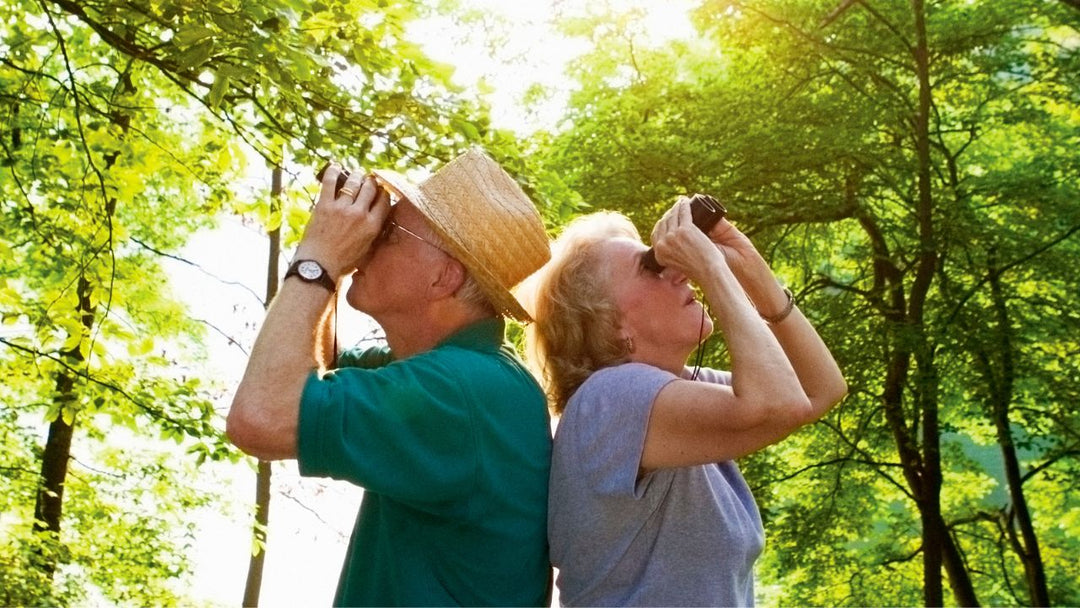Campfires are a common element of outdoor activities, such as camping trips and backyard gatherings. They provide warmth, light, a space to cook meals and create an atmosphere for bonding with friends and family. However, as much joy campfires can bring, they also come with significant risks.
A poorly managed campfire can cause severe injuries, property damage or even spark dangerous wildfires. In fact, according to the National Park Service, nearly 85% of wildland fires in the United States are caused by human activities, with campfires being a leading cause.
Understanding campfire safety is essential for anyone planning to enjoy the outdoors. Whether you're an experienced camper or new to outdoor activities, following safety guidelines can ensure that your fire is a source of warmth and enjoyment—not danger. Check out our merino wool clothes for your next adventure.
This article provides comprehensive campfire safety tips, from selecting the right location to extinguishing the fire so you can have a safe and memorable outdoor experience.
Preparing for a Safe Campfire

1. Choosing the Right Location
Choosing the correct location for your campfire is the first critical step in ensuring a safe outdoor experience. Whenever possible, use established fire pits or rings that are often available at designated campsites. These locations are pre-approved because they are designed with safety in mind—away from vegetation, overhanging branches, and other flammable materials.
If you are camping in a more remote area or a place without designated fire pits, selecting the right spot becomes even more crucial. Ensure that your campfire site is at least 15 feet away from tents, trees, shrubs, and any other flammable objects. Avoid areas with overhanging branches that could catch fire from stray sparks.
If the wind is blowing, it could carry embers into these overhanging branches or surrounding vegetation, potentially starting a wildfire. It’s also important to choose a flat surface for your campfire. Avoid hillsides where fire or embers can roll downhill and spread, and always select a spot on bare soil, sand, or gravel, far away from dry grasses or leaves.
How to Get Smoke Smell Out of Clothes
2. Clearing the Area
Once you've chosen a safe location, the next step is to prepare the site by clearing the area around the campfire. Remove any leaves, twigs, and other debris within a 10-foot radius of where you plan to build the fire. This will create a buffer zone that can help prevent the spread of fire if embers are blown out of the pit. Read More Best Camping Hacks for a Stress-Free Adventure

You may also want to dig a shallow pit, especially if you're in a more remote location. This helps contain the fire, reducing the chances of it spreading beyond your control. Line the edge of the pit with rocks to create an additional barrier to contain the fire. However, never use rocks from a riverbed, as they may contain water, which could cause them to explode when heated.
Having a clear and well-prepared site will significantly reduce the risk of your campfire spreading unintentionally.
Building a Safe Campfire

1. Using Firewood and Kindling
Building a campfire starts with gathering the right materials. It’s important to use seasoned, dry firewood, as wet or green wood will create more smoke and can be harder to control. Avoid cutting down live trees or using wood that’s been treated with chemicals, as these can release harmful fumes when burned.
Start with kindling—small twigs, pine needles, or leaves—to get the fire going. Arrange them in a loose pile or teepee shape to ensure proper airflow, which is crucial for maintaining a fire. Once the kindling is burning well, add progressively larger pieces of wood. Be careful not to overload the fire with too much wood at once, as this can cause the fire to become too large to manage safely.
Remember to gather all your firewood and kindling from the area around your campsite before starting your fire. Don’t rely on finding wood once the fire is already lit, as this could lead to you leaving the fire unattended. Check out our article about Campfire Drinking Games That Will Make Your Outdoor Trip.
2. Building a Fire Pit
Building your own fire pit is essential for controlling your campfire in areas without pre-existing fire rings. As mentioned, dig a shallow pit about 6 inches deep and 2 feet in diameter. Surround the pit with a ring of stones, which helps to contain the fire and prevent embers from escaping.
Make sure the pit is built on a flat surface away from any dry vegetation. If you’re in a forested area, avoid building your fire pit near roots that can catch fire underground. The fire should always be contained in such a way that it won’t spread even if the wind picks up or if you need to leave the fire unattended for a short while (though you should never leave a fire entirely unattended).
Maintaining a Safe Campfire

1. Monitoring Wind Conditions
Wind can quickly turn a controlled campfire into a dangerous situation. Before starting your fire, always check the weather forecast to ensure that no high winds are expected. If the wind starts to pick up unexpectedly, monitor how the fire behaves. If embers are being blown out of the fire pit, it's time to extinguish the fire. Read More Expert Tips for Camping in the Rain.
To further minimize risks, always position your seating area upwind from the fire. This will not only protect you from smoke inhalation but also help shield you from flying sparks or embers. Avoid sitting too close to the fire, and make sure children and pets are supervised at all times.
2. Keeping a Fire Extinguisher Nearby
Having the right tools on hand to quickly control a fire emergency is a key part of campfire safety. It is recommended to have a bucket of water, a shovel, and either a fire extinguisher or fire blanket nearby for safety precautions. The water can be used to extinguish the fire if it starts to spread, while the shovel can be used to smother the flames with dirt or sand.

Be proactive and prepared. By having the right equipment on hand, you can react quickly and prevent a small issue from turning into a disaster. If the fire becomes uncontrollable, it is important to use the fire extinguisher as a first step before seeking help.
Protect yourself from flying sparks with fire-resistant clothing from Merino Protect, offering high-quality outdoor gear designed for both comfort and safety.
3. Using the "Drown, Stir, and Repeat" Method
The process of extinguishing a campfire properly is often overlooked, but it is one of the most important steps in campfire safety. Many wildfires have been caused by campfires that were not fully extinguished before campers left.
The most efficient way to ensure a campfire is completely put out is to use the technique known as "Drown, Stir, and Repeat." Start by dousing the fire with plenty of water. Make sure to cover all the embers, not just the visible flames. Use a stick or shovel to stir the ashes and remaining wood, allowing the water to reach any hidden hot spots. Once stirred, pour more water and repeat the process until the fire is entirely out.
4. Ensuring the Fire is Completely Out
After completing the “Drown, Stir, and Repeat” method, take a few extra minutes to ensure the fire is fully extinguished. If you feel heat near the embers, then the fire has not been completely put out. Continue to add water and stir the ashes until they are cool to the touch. Do not depart until you are completely confident the fire is out.
It’s also a good idea to cover the cooled ashes with dirt or sand to further minimize the chances of the fire reigniting. Even small, smoldering embers can reignite hours after the fire appears to be out, especially in windy conditions. Make sure to thoroughly inspect the fire before you leave your campsite or hit the hay.
Conclusion
Campfires add a wonderful element to outdoor adventures, but they must be handled responsibly to prevent accidents and protect the environment. By following these campfire safety tips, you can ensure that your campfire remains a source of warmth and enjoyment without posing a danger to yourself, others, or nature.
The key takeaways for campfire safety are simple but essential: choose the right location, build and maintain the fire properly, monitor the weather, and always ensure the fire is fully extinguished before leaving. With these practices in place, you’ll be well-prepared to enjoy the great outdoors without putting yourself or the environment at risk.
For added safety and comfort during your camping trips, consider wearing protective, fire-resistant clothing from Merino Protect. Their outdoor gear is designed to keep you safe from the elements while ensuring you have the best possible outdoor experience.
FAQs About Campfire Safety Tips
1. What is the First Step in Ensuring Campfire Safety?
The first step is choosing an appropriate location. Keep a distance of at least 15 feet between your campfire and nearby tents, trees, and other flammable items.
2. How Should I Prepare the Campfire Site?
Clear the area of any dry leaves, grass, or other flammable debris. Make a shallow depression in the ground and enclose it with rocks to control the fire.
3. How Can I Maintain a Controlled Campfire?
Keep the fire small and manageable. Make sure to keep a bucket of water or a shovel close by at all times in case the fire needs to be extinguished, and never leave it unattended.
4. How Can I Safely Extinguish a Campfire?
Pour water on the fire, stir the ashes with a stick, and then pour more water until the fire is completely out and the ashes are cool to the touch.
5. Are There Any Specific Rules for Campfires in National Parks?
Yes, always check the specific regulations of the park. Several national parks have designated fire rings along with strict guidelines that need to be followed.
6. What Safety Gear Should I Have on Hand When Building a Campfire?
Have a first aid kit, a fire extinguisher, and plenty of water available. Ensure your clothing is non-flammable and stay clear of flames for your safety.
7. How Can I Ensure My Campfire is Eco-friendly?
Use only dead and fallen wood, avoid burning plastics or other pollutants, and follow Leave No Trace principles to minimize your impact on the environment.









Hinterlassen Sie einen Kommentar